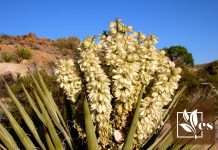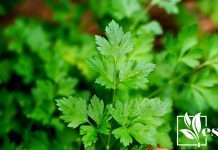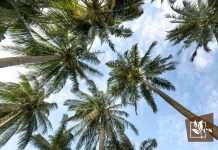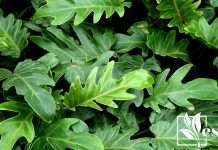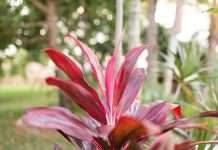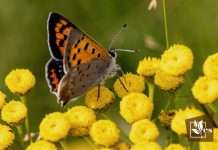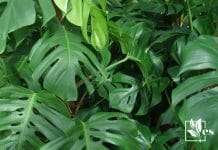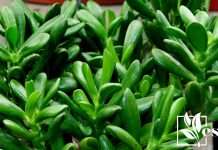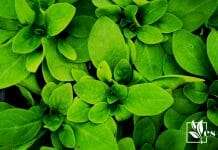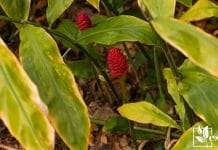Searching for plants similar to birds of paradise to decorate your garden? Here, we explore several other species of plants that share their ornamental features for your knowledge and perusal.
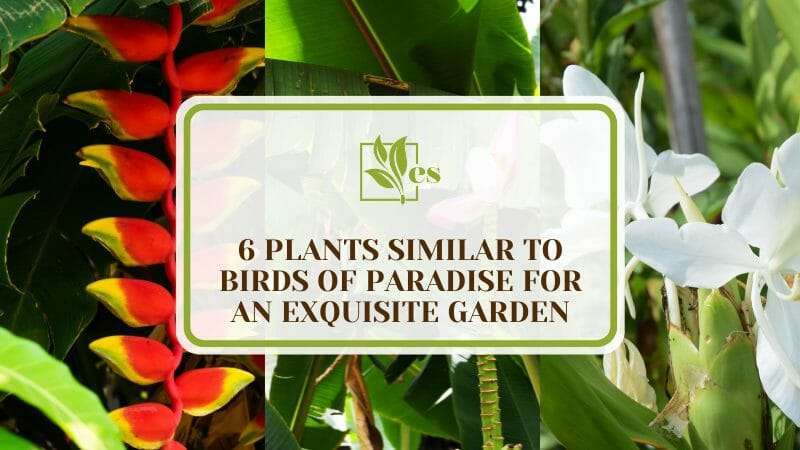
The five original birds of paradise plants of the Strelitziaceae family, named after royalty and renowned for their bird-like flowers and ornamental value, are Strelitzia Reginae, Strelitzia Nicolai, Strelitzia Juncea, Strelitzia Alba, and Strelitzia Caudata.
Reading this article will help you choose an excellent substitute for the birds of paradise varieties of the Strelitzia genus that fit your garden’s aesthetic.
JUMP TO TOPIC
Attractive Ornamental Plants Similar to Birds of Paradise
Whether you love birds or want to match the unique look of the Strelitzia plants, these six vibrant alternatives are guaranteed to liven up the garden.
Each plant below has a unique aesthetic and personality. Remember, the best choice is the one that best fits your preferences.
1. Traveler’s Palm
Formally known as Ravenala Madagascariensis and sometimes as the East-West palm, the traveler’s palm is a banana-palm hybrid with an ornamental fan-like leaf spread. It looks like a peacock spreading its magnificent tail.
It is a close relative of the original birds of paradise and the only plant in this list belonging to the Strelitziaceae plant family (the bird of paradise plant family).
The leaves are large (up to 10 feet long), shaped like a banana plant’s, symmetrically grouped, and supported with long petioles. Outdoors, the tree can reach a maximum height of around 15–50 feet with a spread of 18 feet. The variations are mostly zone-to-zone. Indoors, it can be limited to 3–8 feet tall and 4–8 feet wide.
Found natively in Madagascar, the genus Ravenala was updated in 2021 with five additional species with a similar appearance. However, the Traveler’s Palm remains the most popular for ornamental purposes and is easy to maintain.
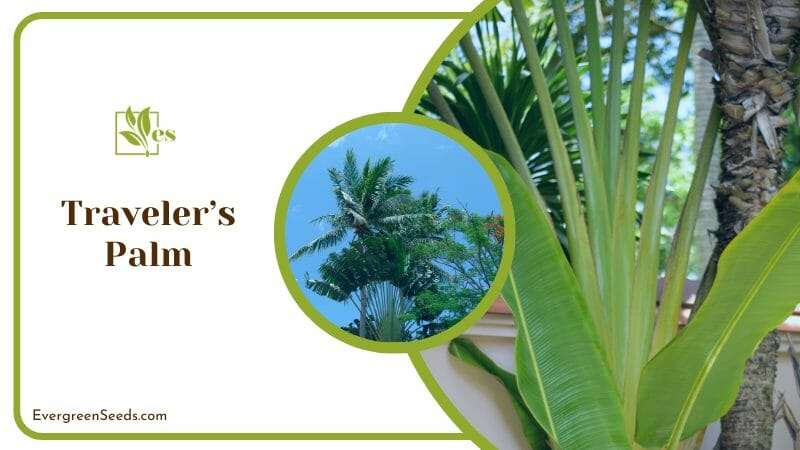
It grows best in full sun and can also tolerate partial shade. If you plan to plant it indoors, put it in a room with plenty of bright light, preferably next to a window. Never leave it for long in low-light conditions!
Keep the soil evenly moist, but be careful not to over or underwater. As with most plants, a good indicator that it needs water is when the soil’s upper surface is dry. The watering schedule will vary region-to-region depending on how hot and sunny it gets.
It needs nutrient-rich, well-draining soil to grow effectively and the fertilizer requirement varies depending on the soil specifications. Use a high-nitrogen fertilizer and feed at the start of the spring, summer, and fall seasons. You can adjust according to the package instructions for whatever fertilizer you use.
Interestingly, while it may not be obvious, the traveler’s palm does produce large, creamy white flowers once it grows five years old. They appear at the intersection of the tree’s leaves and the stem. Full of nectar, they will attract pollinators to the garden (which is always good).
2. Canna Lily
Canna lily is a tropical perennial with beautiful, uniquely shaped flowers. Its leaves are usually a lush green color with an elongated, elliptic shape ending on a pointed tip. The length of the leaves changes between species but averages around 2 feet.
All in all, the leaves look a lot like those of the birds of paradise. An example of a species is Canna Indica – a popular choice in the gardening community.
Some cultivars also have variegated and purplish-red leaves. Flower colors also change between species and cultivars, ranging from pink to red to orange to pale yellow. Contrary to their name, they are not technically lilies.
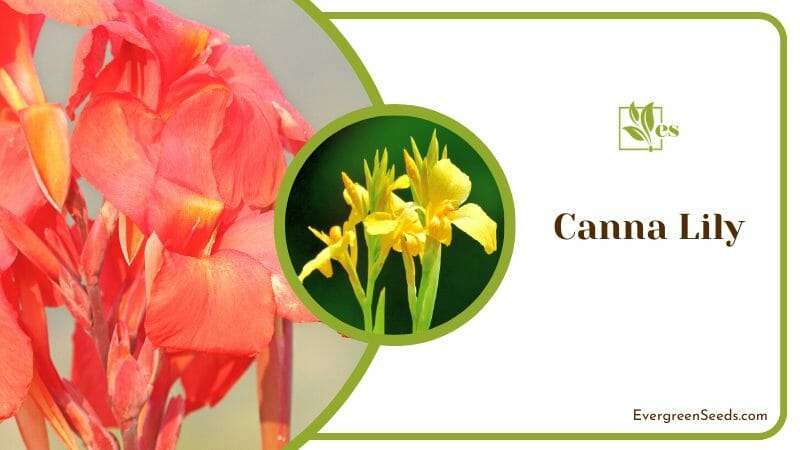
Today, Canna Lilies appear in different size ranges. The overall height range between all sizes is 1–7 feet, and the spread range is 1–3 feet. The dwarf varieties are great for indoor plants, and the taller varieties will add a beautiful splash of color to your garden.
If you decide to plant a Cana Lily, do so in a spot where it receives full sun – it thrives in hot and humid conditions. Indoors, placing it near a window where the sun filters in for over 6 hours a day will also work. For ideal growth, choose a type of soil that retains moisture but drains well.
It needs a regular watering schedule, though it varies between seasons and regions. You should wait for the soil to dry out between waterings. Once established, they are slightly drought-tolerant. Still, they are much happier with water.
3. False Bird of Paradise
The false bird of paradise (scientific name: Heliconia Rostrata) is known for its rapidly growing nature and similarity to the original birds of paradise.
Its leaves are dark green and around 4 feet long with a leathery texture. Their shape is banana plant-like, supported by thick stems. The plant sprouts vibrant flower clusters that look like bird beaks, standing either straight or loose in a downward-facing direction. The resemblance is so uncanny that it is sometimes called the “parrot’s hanging beak.”
The beauty of its flowers rivals that of the paradise flowers. They are nectar-filled, so the plant attracts a lot of birds and bees. It might or might not be desirable for you, but it is usually a good thing to have a pollinator in your garden.
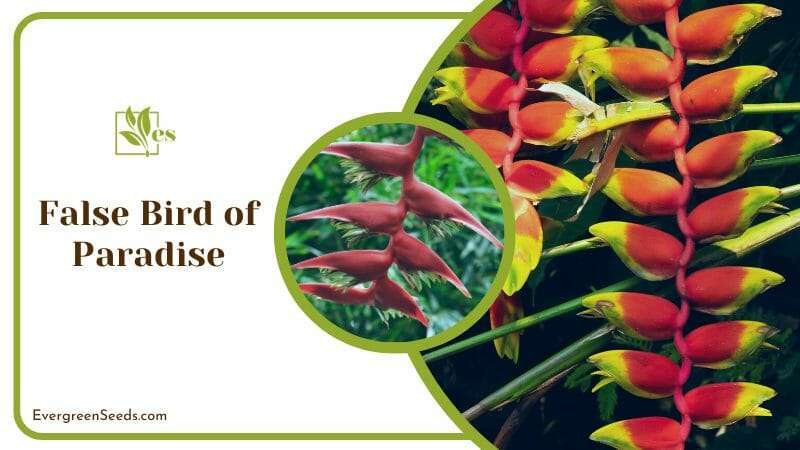
Some Heliconia species grow too tall and wide for indoor use (up to 15 feet). Heliconia Rostrata grows between 4–6 feet tall and 3–6 feet wide. The dwarf cultivar or a smaller variety like Heliconia Psittacorum is preferable as an indoor plant since it can maintain a more reasonable 1–3 feet tall and 1–3 feet wide.
The plant is fussy about its growing conditions, especially indoors. It needs at least 8 hours of indirect sunlight, which can be a problem in low-light winter areas. In that case, you would need to use fluorescent light as an artificial light source.
All Heliconia species require a constant water supply with good drainage, and the false bird of paradise is no exception. The plant is susceptible to drought, so you must keep the soil consistently moist. Let the soil dry between waterings, but rewater immediately after.
For fertilization, you should feed a weak liquid fertilizer to the plant every second week during the growing season and once per month during the winters. This schedule may change according to your particular fertilizer’s instructions.
4. Ginger Lily
Two species of ginger lily resemble the birds of paradise: White ginger lily (Hedychium Coronarium) and Kahili ginger (Hedychium Gardnerianum).
White ginger lily has lance-like leaves spread out in a palm tree-like fashion. The leaves are a little smaller at 2 feet long, but they retain a distinct “birds of paradise” look. It blooms with intricate white flowers and grows between 3–6 feet high and 2–3 feet wide.
On the other hand, Kahili ginger is a Himalayan variety with lush, lance-shaped green leaves around 1–2 feet long. It boasts a spiked, upright flower stem of about 18 inches. This one grows 5–6 feet high and 2–3 feet wide.
The flowers of the Kahili are about 3 inches wide and grow cylindrically around the stem. They are colored bright yellow and emit a strong fragrance. Long, easily visible red stamens poke straight out of each flower.
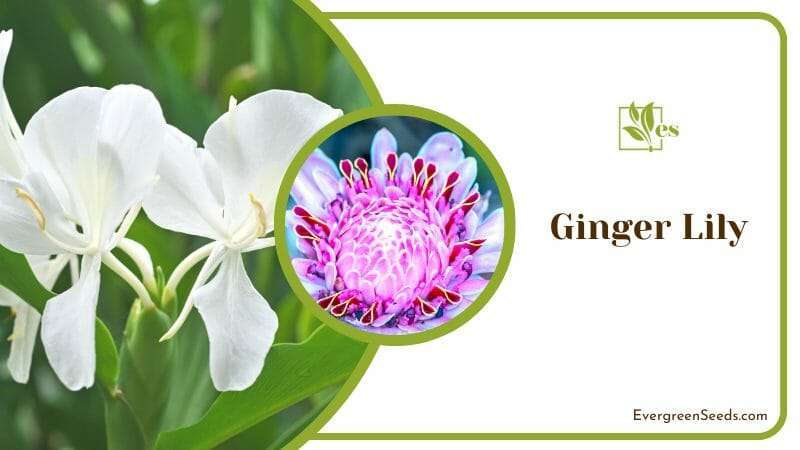
Both species grobest in full sunw and tolerate partial shade. Kahili ginger prefers humus-rich, moist, and well-drained soil, whereas white ginger likes organically rich, medium to wet soil with good drainage.
You should water them whenever the soil dries and try to keep a regular schedule. White ginger can even grow in shallow water. Further, keep both plants warm during winter by mulching or sheltering them, especially if your area is frost-prone.
These ginger lilies are ornamental and look stunning in bloom. However, in some regions, they are considered invasive and have already affected native habitats. You should check if it is legal to plant it in your area to keep the environment safe!
5. Banana Plant
Formally part of the Musa genus, banana plants are known for their large, paddle-like leaves. The leaves average 6–7 feet in length and 1–2 feet in width. That’s longer than the Strelitzia plant leaves (4 feet long with a more lance-like shape), but the texture and feel are remarkably similar (waxy and glossy).
The plant’s appearance is distinctly tropical – a famous trait of the birds of paradise. Its large leaves and rapid-growing nature make it especially great for attractive landscaping. Some banana species and their dwarf cultivars also make for good indoor plants, though they will not bear fruit in those conditions.
When planted outdoors, banana tree sizes vary between species. Some go up to 30–40 feet high! Musa Acuminata, the most common banana tree, usually grows between 12–20 feet tall and 6–10 feet wide.
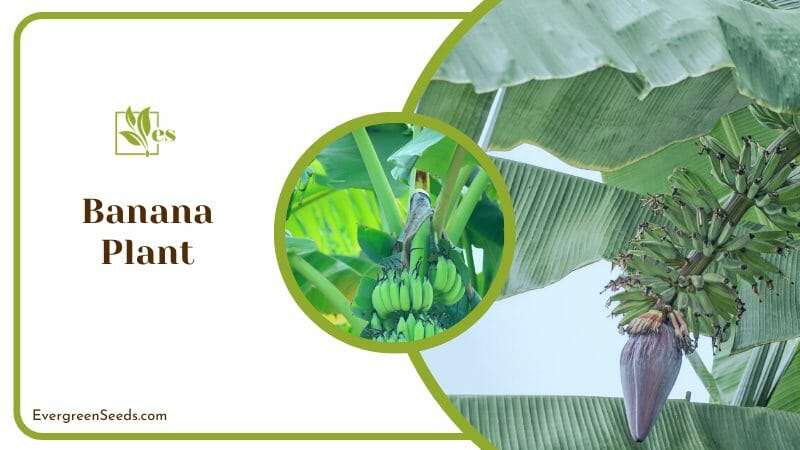
On the other hand, the dwarf variant Musa Acuminata “Dwarf Cavendish” can maintain a height between 3–9 feet and a width of 3–4 feet, which makes it viable as a houseplant.
Most outdoor variants prefer to grow in full sun, but some do better with partial shade. They are not particularly salt-tolerant and grow best in slightly acidic, organically rich soil with good drainage.
Because of their tropical nature, banana plants require high humidity and evenly moist soil. At the same time, they are susceptible to root rot, necessitating a consistent, balanced quantity of water. Further, they are heavy feeders, so you want to fertilize regularly during the growing season (follow instructions on the bag).
When planting indoors, the requirements remain the same. However, providing a high-humidity environment indoors and lots of light can be tricky. For humidity, you can set up a humidifier, spritz the plant with room temperature water, or just take it outside on warmer days.
6. Caesalpinia
The Caesalpinia genus has three plant species often called birds of paradise, even though their appearance is vastly different from the Strelitzia species. However, their bold and colorful flower shapes and patterns are often considered similar to an actual bird of paradise.
However, the red bird of paradise (Caesalpinia Pulcherrima) is a shrub with broad, fern-like leaves and royal-looking, bright red-orange flowers that appear in clusters.
It goes up to 20 feet high and grows fast in arid (desert-like) regions under the full sun. It is usually planted for ornamental purposes, though it bears fruits in pods (like pea plants).
The second is the Mexican bird of paradise (Caesalpinia Mexicana). It is similar to C. Pulcherrima in structure but is native to Northern Mexico and has yellow flowers and pods. It also loves the full sun and can go up to 15 feet tall.
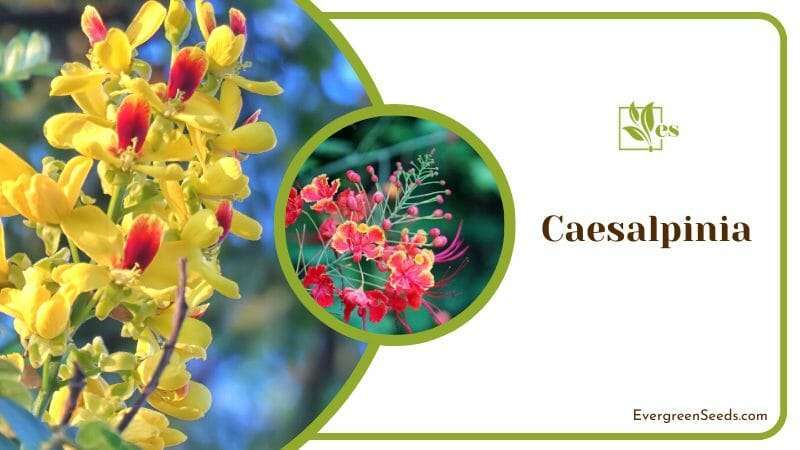
The last variant is called the yellow bird of paradise (Caesalpinia Gilliesii). Though it remains structurally similar to the red and Mexican birds of paradise, it is native to Argentina and Uruguay and sprouts yellow flowers with red pods. It is shade-tolerant, 7–10 feet high, and only evergreen in warmer climates.
All three plants are low-maintenance. While growing, the plants prefer moist, well-drained soils. Watering them 2–3 times a week during summers is usually sufficient. Once established, all three species have high drought tolerance and can go for a long time without water.
Growing these birds of paradise indoors is possible, but it requires a lot of care and perfect conditions. If you can provide them, go for it! The height is not a big problem in bigger houses since they take well to pruning. Generally, though, they are easier to set up outdoors.
Caesalpinia blooms are like a firework of beauty and effectively attract hordes of butterflies and bees. The plants have medicinal properties and are known to have cured coughs and fevers.


